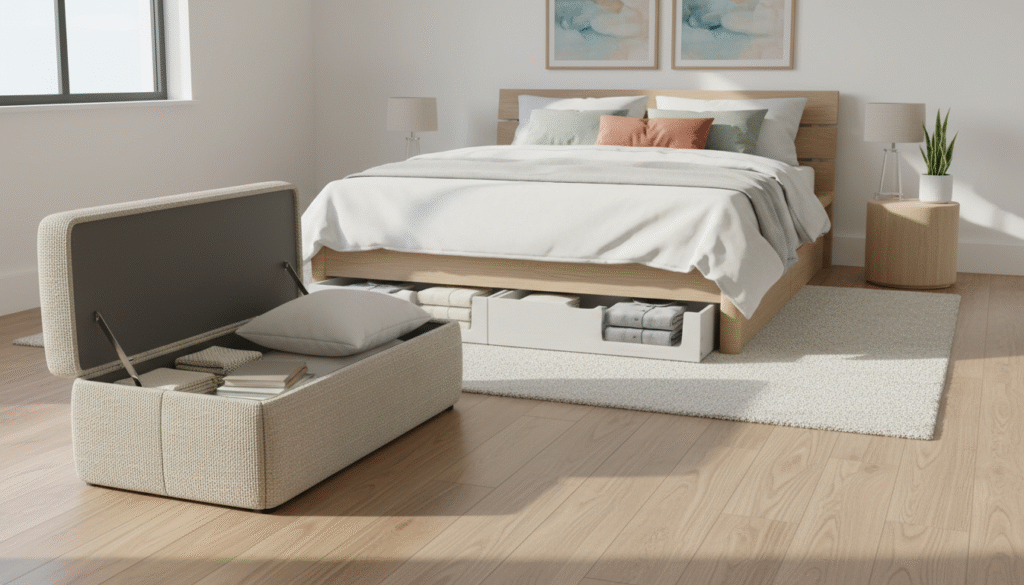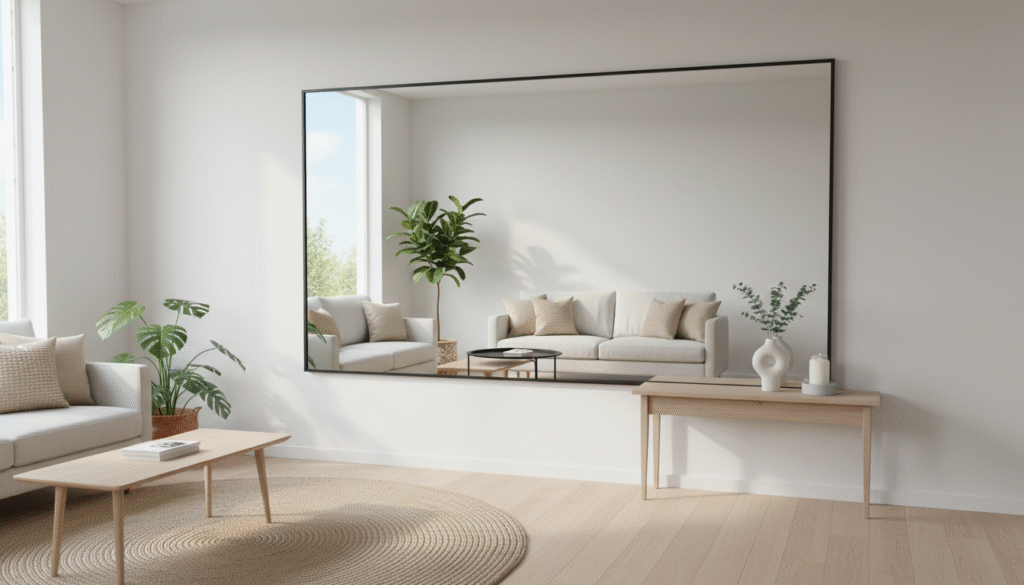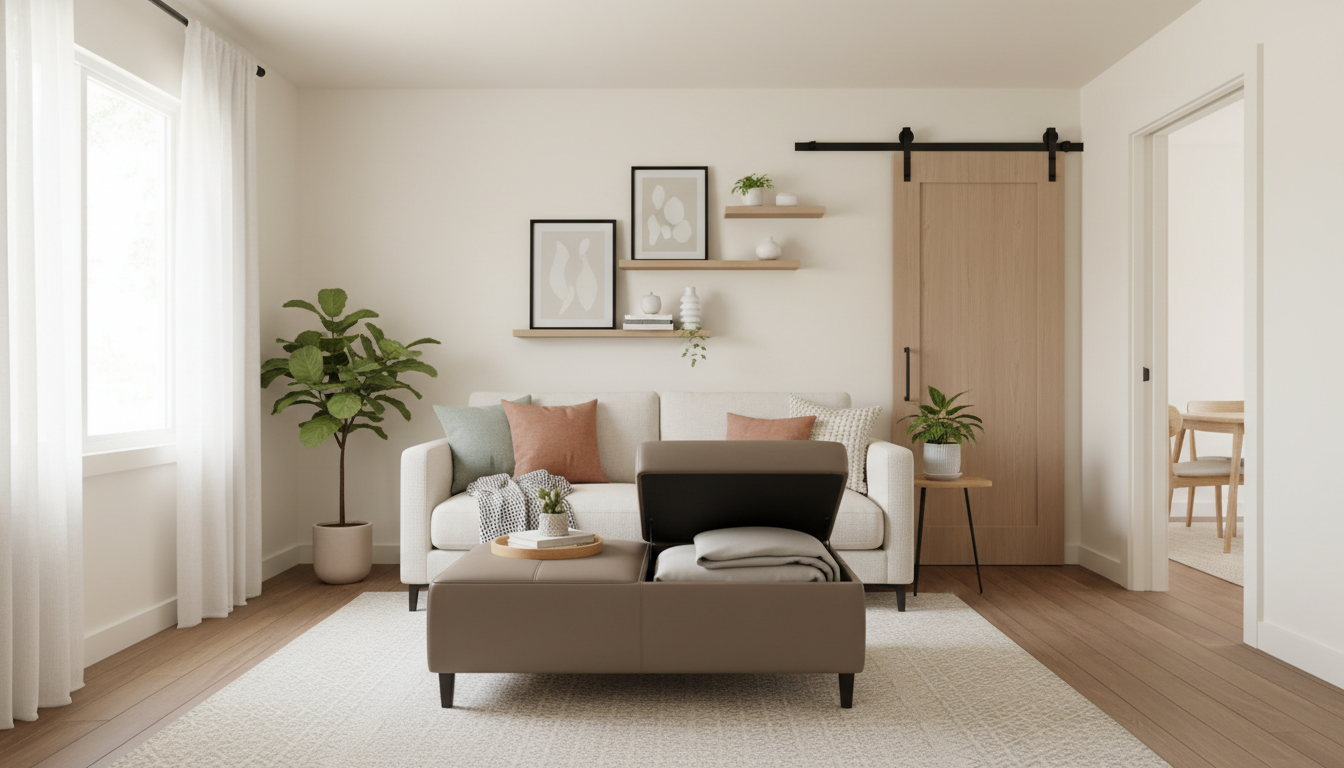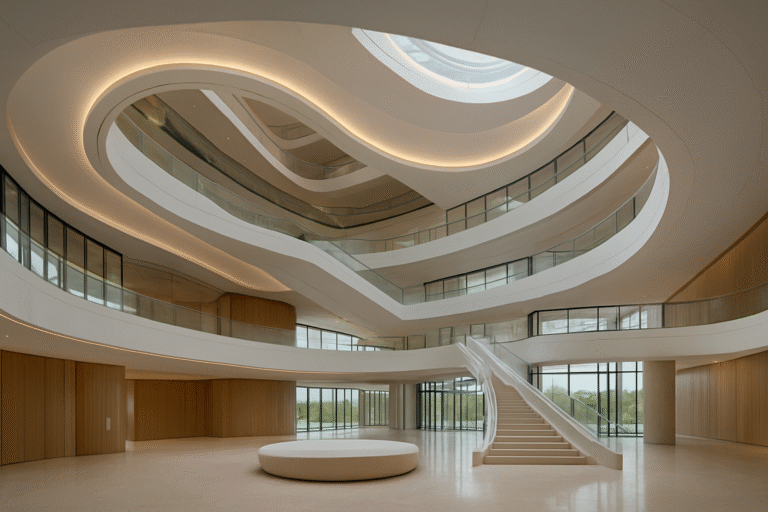Small House Makeover Ideas That’ll Make You Fall in Love With Your Space Again
Cozy, real-life small house makeover ideas to maximize space, style, and comfort—without needing a bigger home or a bigger paycheck.
I used to think my small house was the universe’s way of saying, “You’re doing fine… but not that fine.” You know the vibe: congratulations, here’s 900 square feet and a mysterious closet that somehow holds everything except what you’re looking for.
Then one day, a friend with a huge, shiny, Pinterest-perfect house came over, looked around my place, and said, “I love how everything is just right here. My house feels like a hike.” That was the moment I stopped apologizing for my square footage and started getting obsessed (in a healthy-ish way) with smart small house makeover ideas.
And as it turns out, design experts and researchers are on our side. A study in the Journal of Environmental Psychology in 2022 found that people in smaller, well-organized homes often reported higher satisfaction than people in larger, cluttered ones. Translation: it’s not the size of your house; it’s how thoughtfully you use it.
So if you’re tired of side-shuffling past furniture, balancing your laptop on a wobbly coffee table, or wondering where on earth your storage went, you’re in the right place. Let’s walk through practical, realistic small house makeover ideas that don’t require a lottery win—or a full renovation.
Why Small House Makeover Ideas Matter More Than Ever
We live in a world where you can watch three tiny-home tours before you’ve finished your morning coffee. Downsizing, simplifying, and “right-sizing” are officially a thing—not just for people living in off-grid cabins with composting toilets.
The average American home size peaked around 2,687 square feet in 2015, according to the U.S. Census Bureau. Since then, there’s been a slow but steady shift toward smaller spaces and smarter layouts. Some people are choosing this for financial freedom; others are just tired of cleaning rooms they barely walk into.
I noticed it when my sister traded a big rental house for a small apartment in the city. She lost a guest room and half her closets—but gained walkability, lower bills, and a place that actually felt like her. Watching her turn 750 square feet into a calm, stylish home is what sent me down the rabbit hole of small house makeover ideas.
If you’re here, I’m guessing you’re looking for the same thing I was: ways to make your home feel bigger, calmer, more “you”—without bulldozing walls.
Start With the Un-Sexy Hero: Decluttering on Purpose
I know. “Declutter” shows up in every article like the uninvited guest who’s somehow always at the party. But when it comes to small house makeover ideas, it really is the foundation. You can’t layer great design on top of chaos. I’ve tried. It just looks like… curated chaos.
One weekend, I finally hit my limit. I opened a hallway closet and an avalanche of stuff came out—a yoga mat, three broken umbrellas, and a fondue pot I’d never used. That’s when I decided the clutter had to go.
A research team from UCLA’s Center on Everyday Lives and Families actually tracked families in their homes and found a clear link between high household clutter and elevated cortisol (hello, stress). In a small house, that stress gets magnified, because you see the stuff everywhere.

The Three-Box Method That Saved My Sanity
Here’s what worked for me—and I say this as someone who used to “organize” by shoving things in drawers.
I grabbed three boxes and labeled them: Keep, Donate, and Maybe.
- Keep was for things I use or truly love. Not “might use” or “could be handy someday.”
- Donate got the extras: duplicates, impulse buys, that gadget I swore I needed because TikTok said so.
- Maybe was my security blanket. Things I couldn’t quite let go of went in there.
The rule I set for myself: the Maybe box had to leave my everyday living space. I stuck it in a storage area for three months. If I didn’t go hunting for anything in it during that time, the whole box went to donation—no peeking.
I’ve done this a few times now. The wild part? I can’t even remember what was in most of those boxes. Apparently if I don’t miss it for three months, I probably never needed it in the first place.
When the clutter finally cleared, my house didn’t get any bigger, but it felt like it did. Suddenly the other small house makeover ideas could actually land.
Paint: The Cheapest Big Impact You’ll Ever Get
If small house makeover ideas had a star player, it’d be paint. It’s affordable, low-commitment, and you can literally transform a room in a weekend (or two weekends if you’re like me and underestimate drying times every single time).
There’s this popular belief that small spaces must be painted white. Only white. Forever. Like we’re all living in a cloud. White can be great, but “light and bright” doesn’t have to mean “clinical and boring.”
I’ve had the best luck with soft, light tones that bounce light around without making the room feel flat: gentle greiges, pale blues, warm creams, and muted greens. The technical term designers geek out over is Light Reflectance Value (LRV)—colors with higher LRV bounce more light, which makes small rooms feel more open.
The Accent Wall I Swore I’d Never Do
I used to roll my eyes at accent walls. They felt like the interior design version of a fad diet—trendy, dramatic, and probably regrettable.
Then I tried one in my home office.
I painted three walls a soft gray and the wall behind my desk a deep navy. I figured if I hated it, I could always paint it back. Instead, people walking into the room kept saying the same thing: “Wow, this room feels bigger than I expected.”
That’s when it clicked: a darker accent wall can create depth, which tricks your brain into reading the room as larger. The key is choosing the right wall—the one your eye naturally hits when you enter. For most rooms, that’s the wall behind the bed, the sofa, or a major window.
Now, I’m not saying every small house needs a dramatic accent wall. But a smart color choice is one of the fastest, cheapest small house makeover ideas you can try—and if it doesn’t work, a new coat of paint fixes almost anything.
Furniture That Actually Earns Its Keep
In a big house, you can get away with a few “just pretty” pieces. In a small house? Every piece of furniture has to justify its existence like it’s interviewing for a job.
When I started being brutally honest about what my furniture was doing for me, I realized something: my gorgeous, solid-wood coffee table was basically a flat, shiny obstacle. It held a stack of magazines I didn’t read and bruises from my shins. That was its whole résumé.
So I swapped it for a storage ottoman. Same footprint, but now it hides blankets, puzzle boxes, and the mysterious collection of remotes that seem to multiply when I’m not looking. It instantly made my living room feel calmer and more flexible.
Multi-Functional Pieces = Secret Superpower
For small house makeover ideas that pay rent in both style and function, I look for:
- Ottomans with storage instead of traditional coffee tables.
- Sofa beds or daybeds in offices or guest rooms so one room can do double duty.
- Drop-leaf or extendable tables that stay compact for everyday use but expand when you have friends over.
- Beds with drawers or lift-up storage so you’re not wasting the entire under-bed universe.

And here’s a little visual trick I wish I’d known from day one: furniture with visible legs (instead of pieces that go all the way to the floor) makes a room feel more open. When you can see more floor, your brain reads the space as larger. The first time I swapped my boxy sofa for one with raised legs, two different people asked if I’d pushed the walls back.
Spoiler: I had not.
Vertical Space: The Overlooked Goldmine
If your floors are full but your walls are bare, you’re leaving square footage on the table. One of the smartest small house makeover ideas I ever tried was to stop thinking horizontally and start looking up.
It hit me one afternoon when I was staring at a pile of cookbooks on my counter. Meanwhile, the wall above the counter was doing absolutely nothing. Just existing. Taking a free ride.
Enter floating shelves.
Suddenly my cookbooks, jars, and a trailing plant had a home. The countertop cleared. The room looked taller. And I swear, my brain let out a sigh of relief.
The High-Low Rule That Keeps You Sane
A professional organizer once shared a simple rule with me that has genuinely changed how I set up every room: use the highest and lowest spaces for things you don’t need every day, and keep your prime eye-level zones for the stuff you reach for constantly.
So now I store:
- Holiday decor, extra blankets, and once-a-year items way up high.
- Luggage, out-of-season clothes, and bulky stuff under beds or on the lowest shelves.
- Everyday dishes, toiletries, clothes, and work items between knee and shoulder height.
It sounds almost too simple, but in a small house it’s the difference between “where did I put that?” and “oh right, of course it’s here.”
Pegboards in the kitchen, hooks by the front door, tall bookcases, even a narrow shelf above a doorway—vertical storage quietly multiplies your usable space without adding clutter to the floor.
Mirrors: Instant Space Without Moving a Wall
I used to think mirrors were mainly for checking if I had spinach in my teeth. Then I hung one opposite a window in my living room and suddenly it looked like I’d added an extra window—and half a room.
Mirrors are one of the most underrated small house makeover ideas out there. They bounce light around, create an illusion of depth, and make tight hallways and small rooms feel less boxed-in.
I now have:
- A tall mirror near the entry to reflect light from the front door.
- A large round mirror above my living room console, catching the view from the window.
- A narrow mirror at the end of a short hallway to elongate the sightline.
The key is being intentional. A mirror that reflects a bright window or a nice view? Fantastic. A mirror that reflects your overstuffed laundry basket? Not doing you any favors.
Once I accidentally placed a mirror across from my “temporary” clutter corner. All it did was double the chaos. I moved it that same afternoon.

Lighting: The Mood Setter Your Small House Deserves
Bad lighting can make even a well-designed small space feel like a basement storage closet. Good lighting, on the other hand, can make 600 square feet feel warm, inviting, and surprisingly spacious.
For years I relied on one sad overhead fixture per room. Flip a switch, harsh light everywhere, instant headache. It wasn’t until I visited a friend’s tiny but impossibly cozy apartment that I realized what I was missing: layers of light.
She had a soft ceiling light, a reading lamp by the sofa, warm glow from under-cabinet strips in the kitchen, and a little desk lamp in the corner. Nothing fancy. But it felt like the room was giving you a hug.
Now I aim for three types of lighting in each main room:
- Ambient (overall light: ceiling fixtures, larger lamps)
- Task (focused light: desk lamps, reading lights, under-cabinet strips)
- Accent (mood-makers: string lights, picture lights, candles)
Dimmable bulbs have also been a game-changer. Bright for cleaning and working, soft for evenings and movie nights. Same small house, completely different vibe at 9 a.m. versus 9 p.m.
Open Shelving: Beautiful, But With Ground Rules
Open shelving shows up in almost every list of small house makeover ideas, and I get why. It’s airier than upper cabinets and keeps everyday items within arm’s reach.
When I swapped a set of closed cabinets for open shelves in my kitchen, the room instantly felt less boxy. But here’s the part Instagram doesn’t always show you: open shelves only look good if what’s on them isn’t total chaos.
I had to learn some new habits:
- Matching or coordinating dishes and containers so the shelves didn’t look like a random yard sale.
- Grouping items—mugs together, bowls stacked, jars lined up.
- Leaving a little empty space so everything could breathe visually.
Now it works. My daily dishes live on the lower shelves, my “nice but fragile” stuff goes up high, and my least photogenic things (looking at you, plastic food containers) live behind closed doors elsewhere.
So yes, open shelving can be a smart small house makeover idea—as long as you’re honest about how tidy you’re willing to be.
Smarter Doors: Pocket, Sliding, and Space-Saving Options
Once you notice how much space a swinging door needs, you can’t unsee it. In a small house, that door-swing zone is basically wasted real estate.
In my place, changing just one door made a huge difference. I turned the bathroom door into a pocket door that slides into the wall instead of swinging into the tiny bathroom. Suddenly I had room for a narrow cabinet that previously would’ve been smacked every time the door opened.
If cutting into walls for a pocket door sounds like a bit much, sliding barn doors or simple track doors can be a lifesaver. They stay flat against the wall, free up floor space, and can actually become a design feature.
The only caveat: make sure the door fully covers the opening when closed and that there’s enough adjacent wall for it to slide. Once those boxes are checked, you’ve just reclaimed several square feet without adding a single inch to your floorplan.

Built-Ins: Custom Solutions for Tricky Spaces
If there’s a secret level to small house makeover ideas, it’s built-in storage. That awkward nook under the stairs? Potential. The weird short wall between two windows? Potential. The empty space below a big window? Prime potential.
The first time I invested in a built-in was a simple window seat with storage underneath. Suddenly I had:
- A cozy reading spot
- Hidden storage for board games and blankets
- A focal point that made the whole room feel intentional
All in a space that had previously just been… a wall with a window.
You don’t always need a custom carpenter, either. I’ve seen amazing “built-in” looks created with IKEA cabinets or bookcases plus a bit of trim and paint so everything looks seamless.
Some of my favorite built-in ideas for small homes:
- Shelving or cabinets around a doorway
- Shallow built-ins between wall studs for books or bathroom storage
- Banquette seating with storage in a dining nook
- A desk niche with shelves in an unused corner
If you’ve got a weird spot you’re not sure what to do with, that’s usually a sign a built-in could shine there.
Color Flow: Connecting Rooms So They Feel Bigger
In a small house, you see more of your home at once. Standing in the living room, you might be able to see into the kitchen, hallway, and maybe even the bedroom. That’s why color flow matters so much.
I learned this the hard way. At one point, I had a yellow kitchen, blue living room, and gray hallway. Each room looked fine by itself, but moving between them felt like channel surfing—jarring and weirdly exhausting.
When I repainted with a more cohesive palette—soft neutrals with blue and green accents—the whole house suddenly felt calmer and more spacious. Nothing actually changed in the floor plan, but the visual transitions were smoother.
A simple rule designers love (and I’ve found surprisingly helpful) is the 60-30-10 rule:
- 60% of the room is your main color (usually walls)
- 30% is a secondary color (furniture, large textiles)
- 10% is an accent color (pillows, art, small decor)
In a small house, repeating versions of those colors from room to room helps everything feel connected instead of choppy.
Layout: Making the Same Room Feel Twice as Functional
You know those puzzles where moving one piece suddenly solves the whole thing? Furniture layout in a small house is kind of like that.
I once spent months feeling annoyed at my living room—too cramped, too awkward, not enough seating. One Saturday I dragged the sofa away from the wall (just a few inches), angled a chair instead of lining it up like it was in a waiting room, and shifted the rug. It took maybe an hour. The room felt completely different.
A few layout tips that consistently help in small homes:
- Float the furniture when you can instead of ramming everything against the walls.
- Create clear walkways so you’re not weaving through a furniture obstacle course.
- Anchor the space with a rug that’s big enough for at least the front legs of major pieces.
When in doubt, I do a “walk-through test.” I enter the room like a guest, walk to the main seating, pretend to grab a drink, head toward a window, and back out. If I bump into anything or feel like I’m dodging furniture, I rearrange.
Same room, same furniture, better flow.
Textiles and Texture: Warmth Without Clutter
One thing I love about small house makeover ideas is how often the smallest changes have the biggest emotional impact. Textiles—rugs, throws, pillows, curtains—are a perfect example.
They don’t take up hard space the way furniture does, but they add:
- Warmth
- Color
- Texture
- Sound-softening (helpful if your small house has a bit of an echo)
I used to be a pillow hoarder (no judgment if you’re there right now). Then I realized I was spending half my life moving them around so I could actually sit down. Now I’m pickier.
Instead of ten random pillows, I keep a few that really work with the space and feel good to actually use. A textured throw on the sofa, a soft rug underfoot, lightweight curtains that let in light but add softness around windows—these are small touches that make a compact room feel finished, not fussy.
Tech and Cables: The Secret Visual Clutter
Here’s something I didn’t expect to matter as much as it does: cables.
Routers, chargers, TV wires—if you don’t manage them, they visually junk up a room, especially when you’re dealing with a small footprint.
Once I mounted my TV on the wall and corralled cables into a simple cord cover, my living room went from “starter apartment” to “grown-up space” in about an hour. Adding a small charging station in a drawer near the entry meant phones, tablets, and random chargers stopped migrating all over the house.
It’s not the flashiest of small house makeover ideas, but hiding or organizing tech and cables quietly boosts how tidy and calm your home feels.
Plants: Low-Square-Footage, High-Impact
If there’s one thing I’ll always make room for, it’s plants. They don’t need much square footage, they soften the hard edges of furniture, and they make even the tiniest studio feel more alive.
I like to mix:
- A taller floor plant in a corner that otherwise looks bare
- A hanging plant or two near windows
- Small potted plants on shelves or desks
A study in the Journal of Physiological Anthropology found that interacting with indoor plants can reduce stress and improve mood. I didn’t need a study to tell me that, but it’s nice to know science agrees.
If you’re worried about keeping them alive, start with forgiving varieties—pothos, snake plants, ZZ plants. I’ve forgotten to water mine more times than I’d like to admit, and they’re still with me.
Letting Your Personality Show (Without Overcrowding)
One mistake I made early on was thinking a small house had to be minimal to “work.” I stripped back almost everything that felt personal, and suddenly the space was tidy… but also kind of soulless.
The sweet spot is somewhere in between: edited, but still you.
Now I keep a few shelves and corners for things that genuinely mean something:
- A framed photo from a favorite trip
- A couple of books I actually re-read
- A handmade mug from a local market
- A small piece of art I saved up for
The difference between clutter and character, at least for me, is intention. If I can point to an item and say, “That’s here because it makes me happy,” it stays. If it’s just there because I never made a decision about it… it might be on borrowed time.
Bringing It All Together: Small House, Big Life
If you’ve made it this far, you’ve basically walked through my entire brain on small house makeover ideas. Welcome. It’s a little crowded in here, but it’s organized.
Here’s what I’ve learned, after rearranging furniture more times than I care to admit and testing ideas in a very real, very imperfect small home:
- You don’t need more space; you need better use of the space you have.
- Decluttering is boring but powerful. It makes every other change more effective.
- Paint, mirrors, vertical storage, and good lighting are your best low-cost allies.
- Multi-functional furniture and built-ins can turn awkward corners into your favorite spots.
- Cohesive color and thoughtful layouts make small homes feel calm instead of cramped.
- Your home should still look like you, just the edited, less-stressed version.
A small house doesn’t have to be a “for now” situation or a consolation prize. With the right small house makeover ideas, it can feel intentional, welcoming, and surprisingly luxurious in its own way.
And honestly? There’s something pretty great about knowing every corner, every shelf, every weird little nook is working hard for you. No wasted rooms. No “we never use this space” guilt. Just a home that fits your actual life.
If your place feels a little off right now, don’t assume you need a bigger house. You might just need a weekend, a can of paint, a donation box, and a few smart tweaks.
The square footage might be small—but with the right mindset and a few creative changes, your life inside it absolutely doesn’t have to be.







